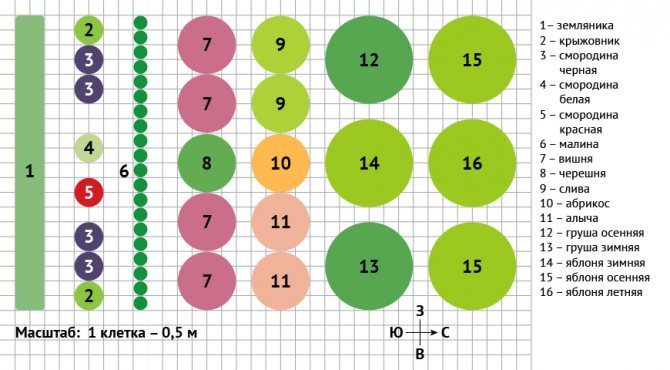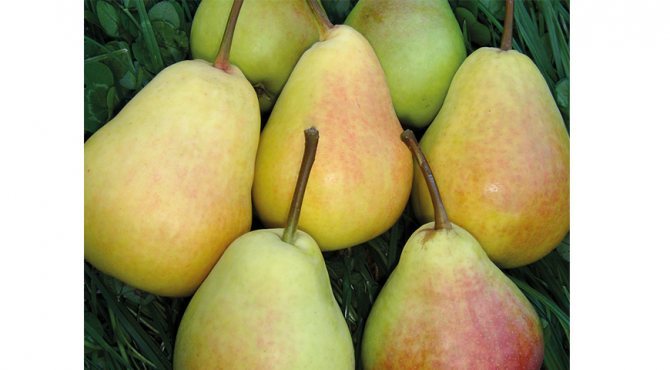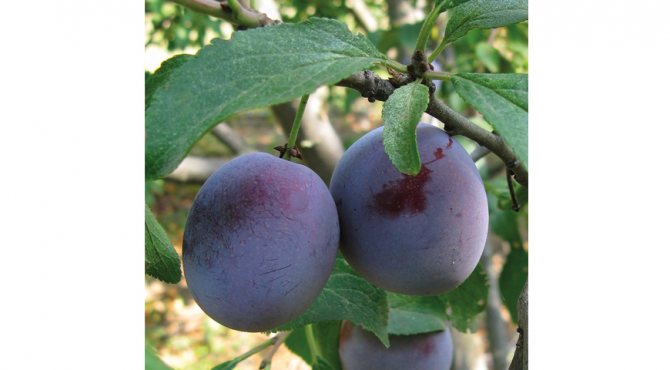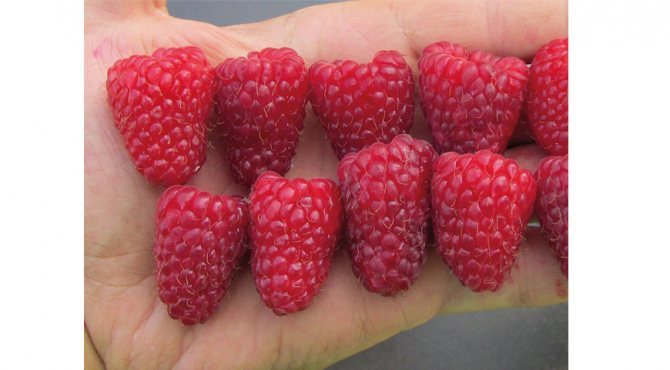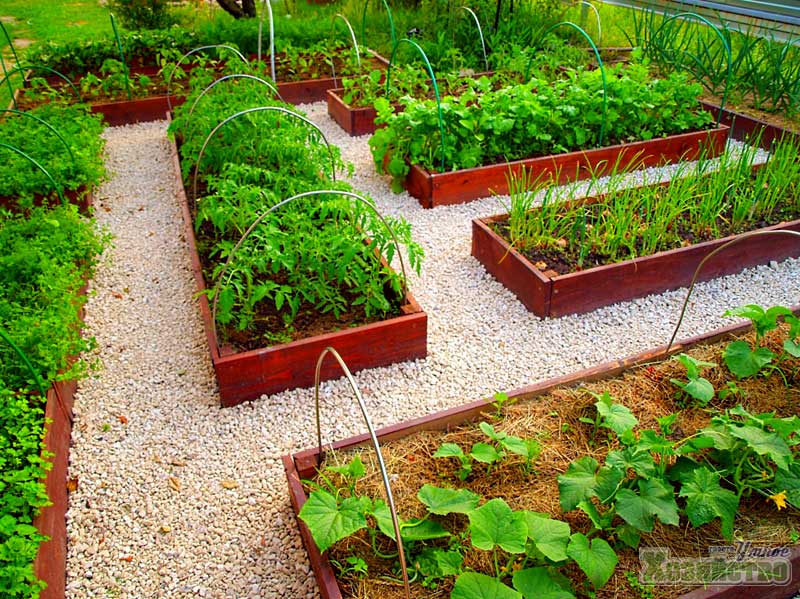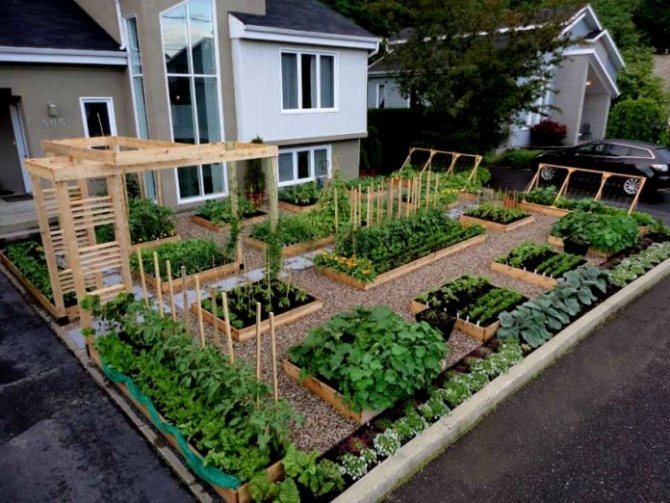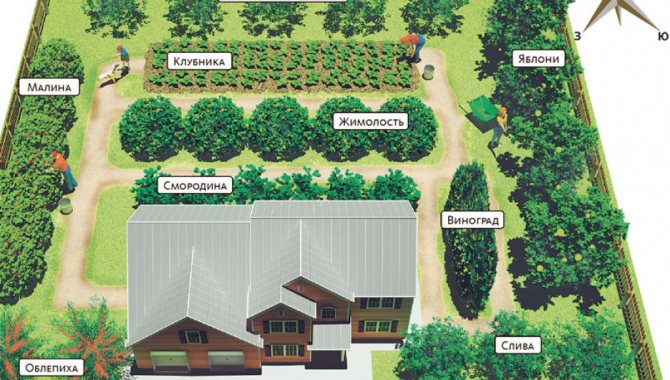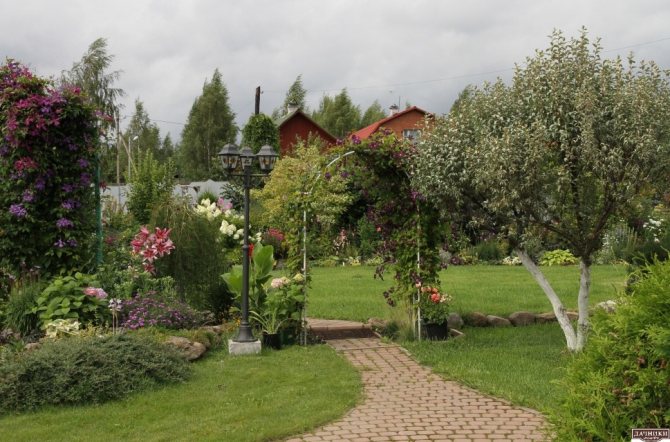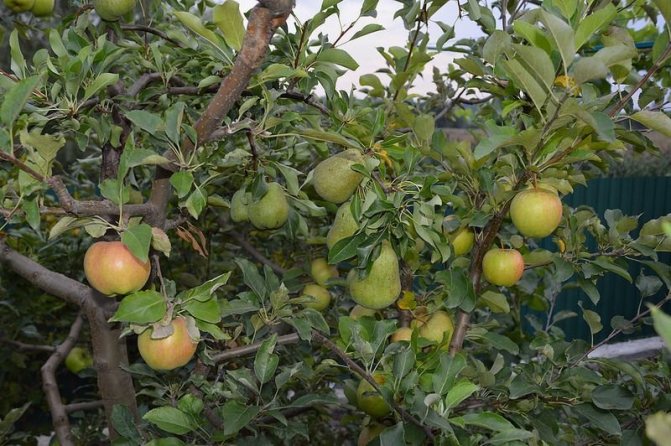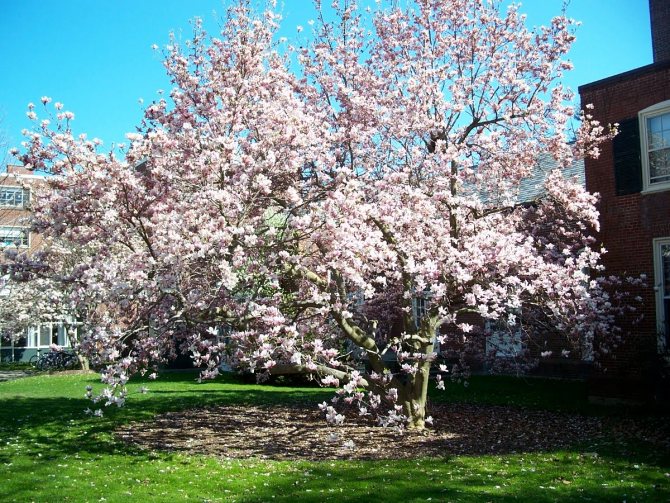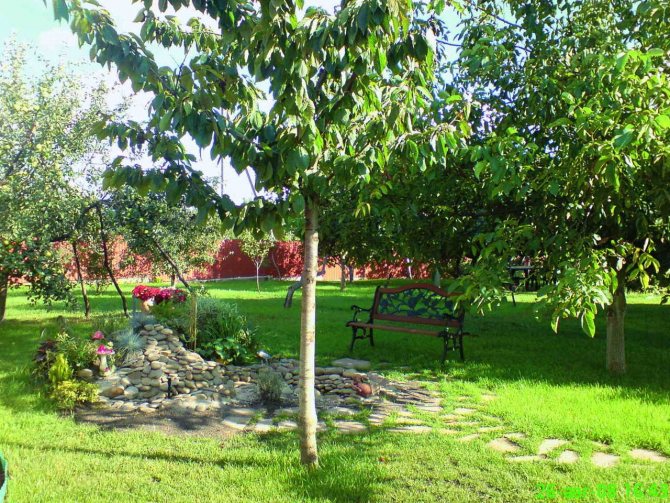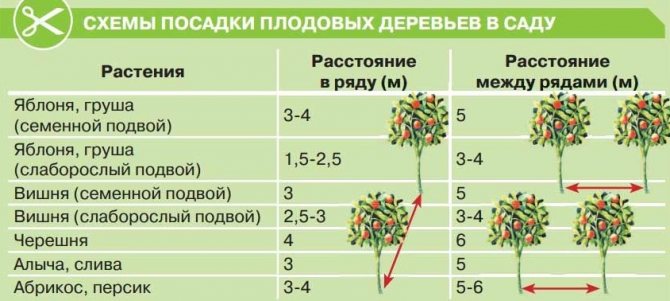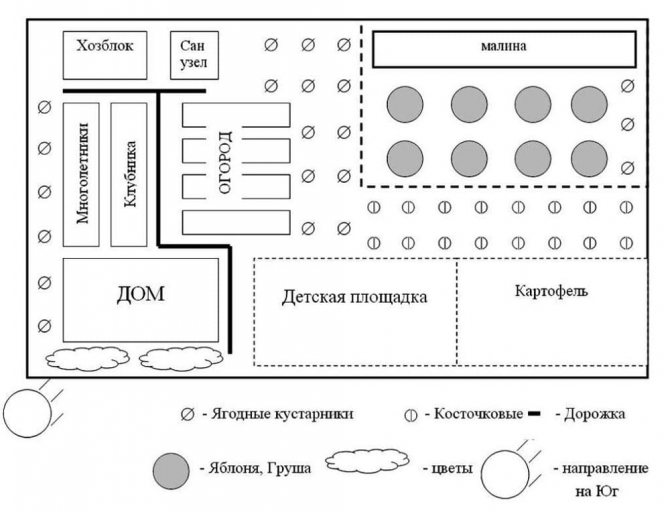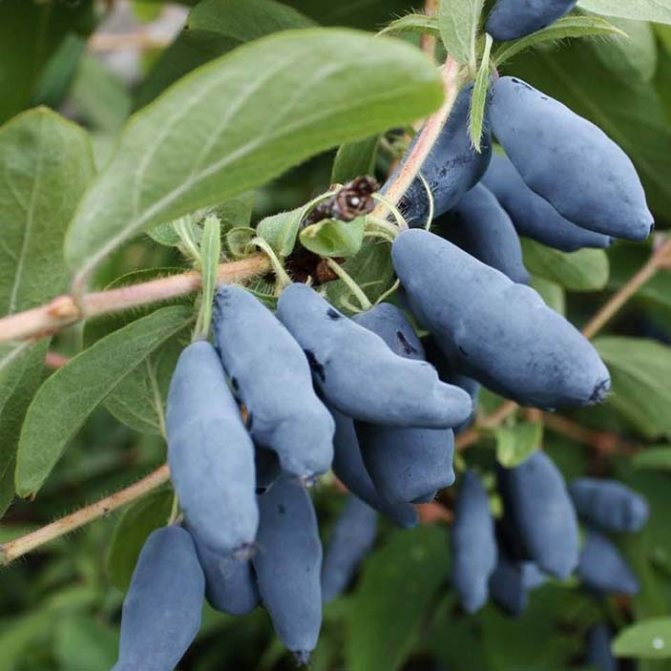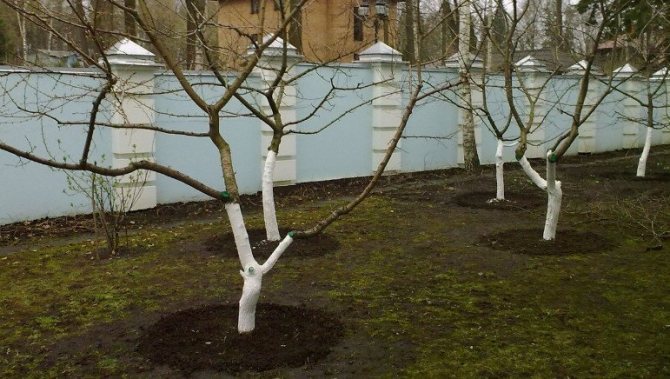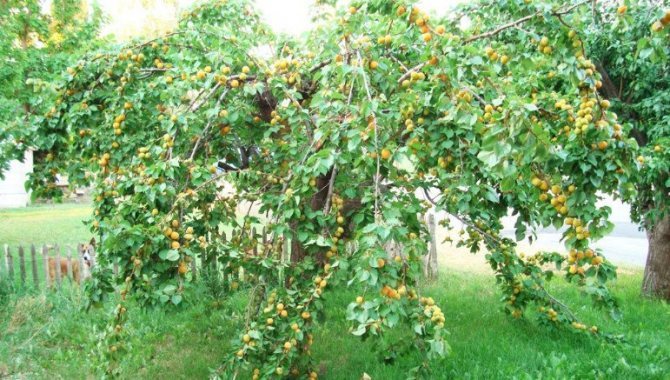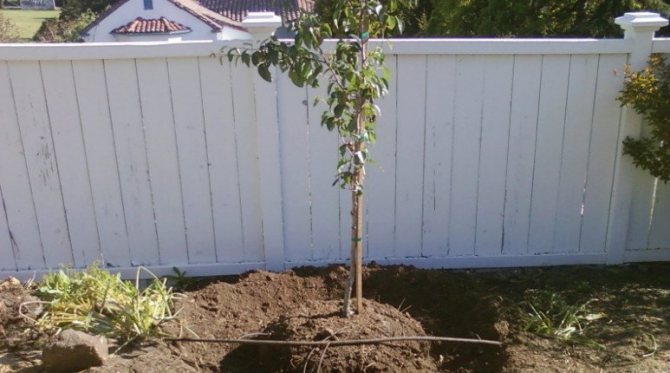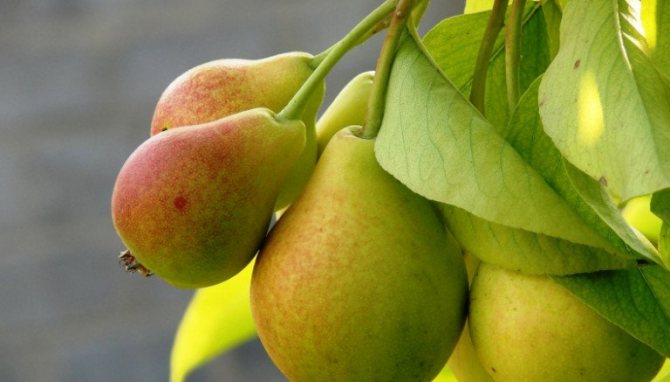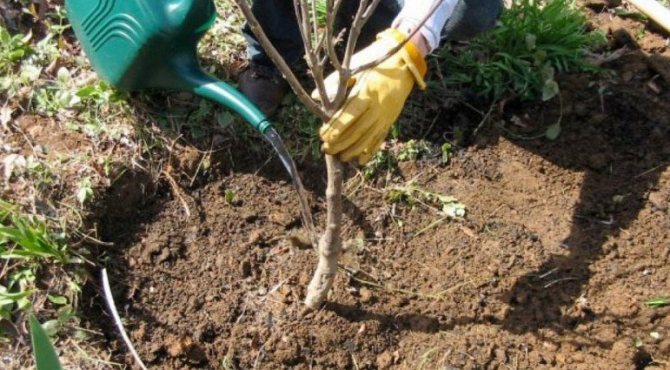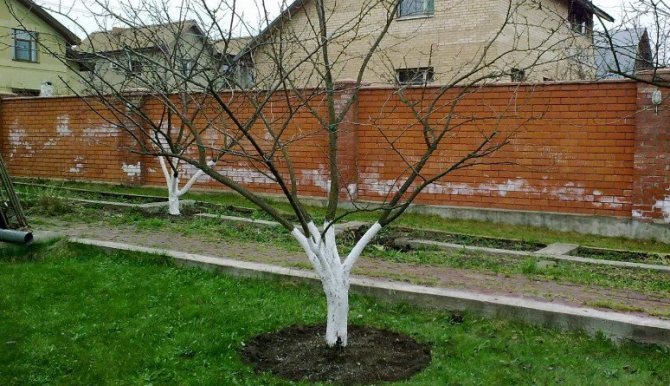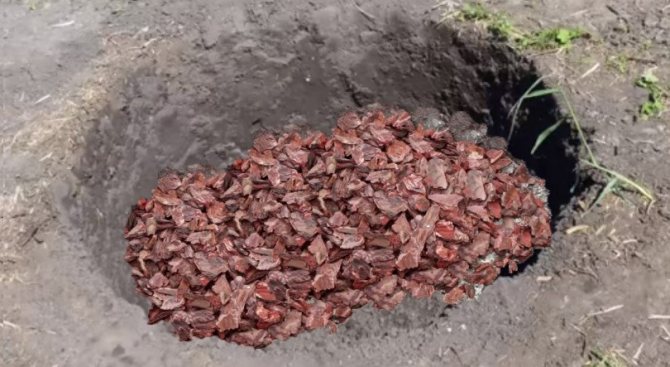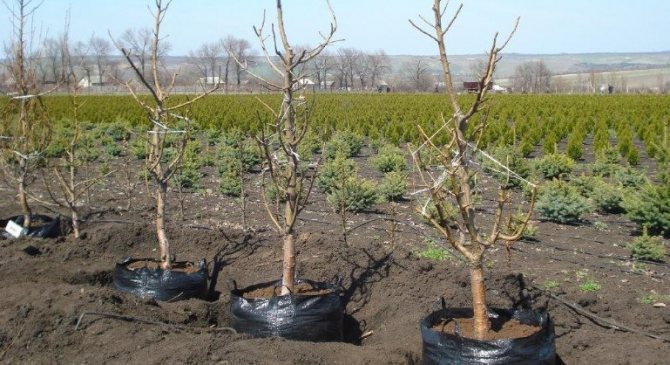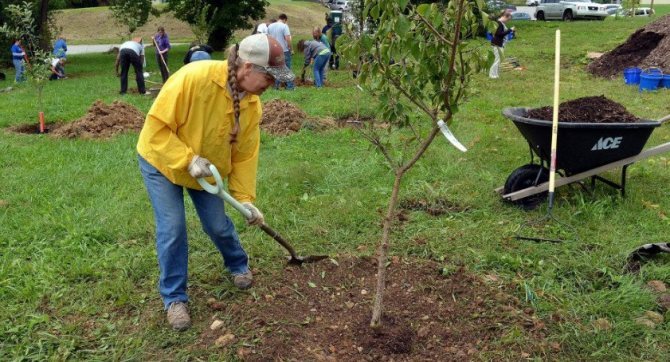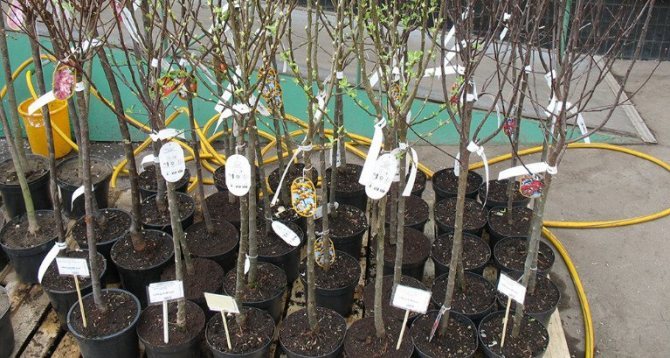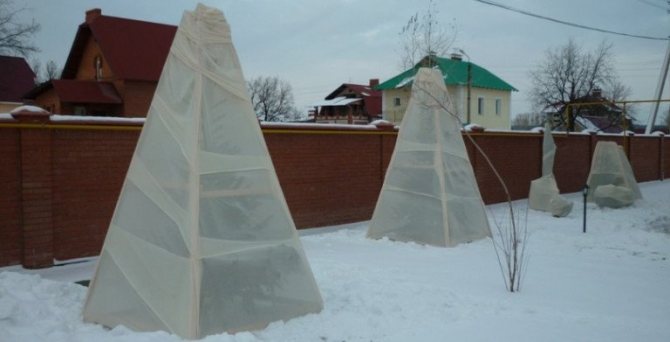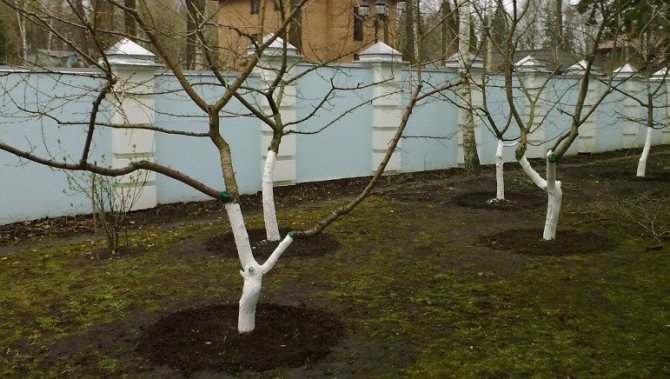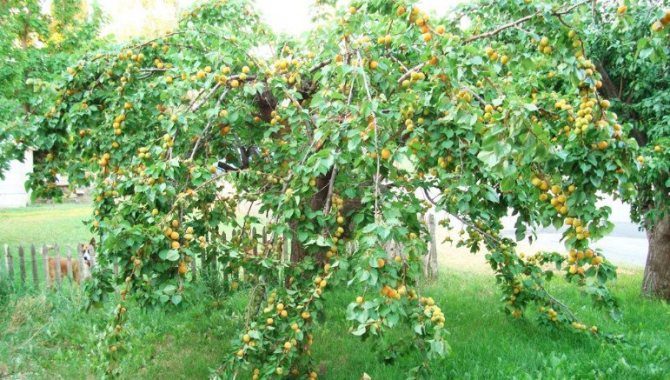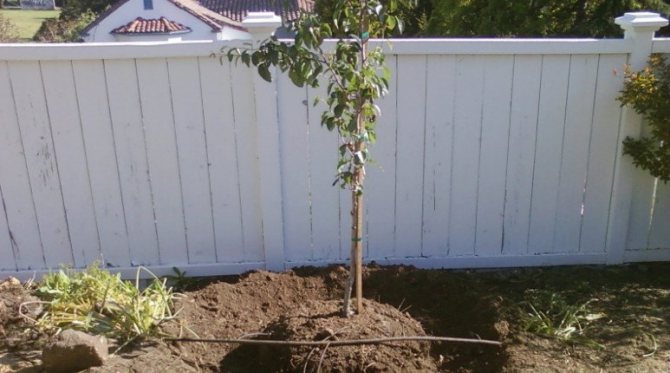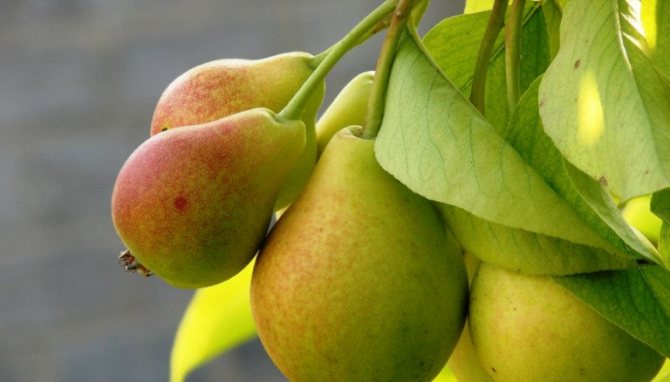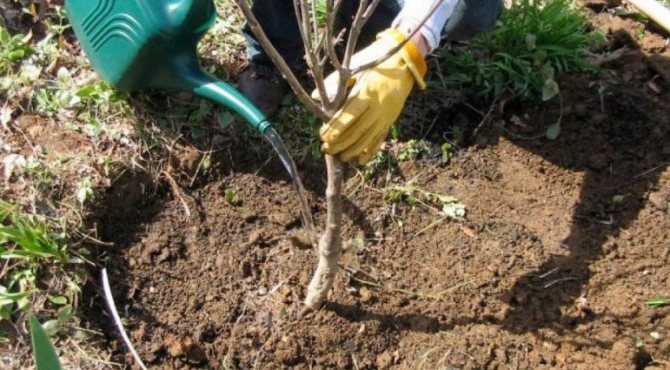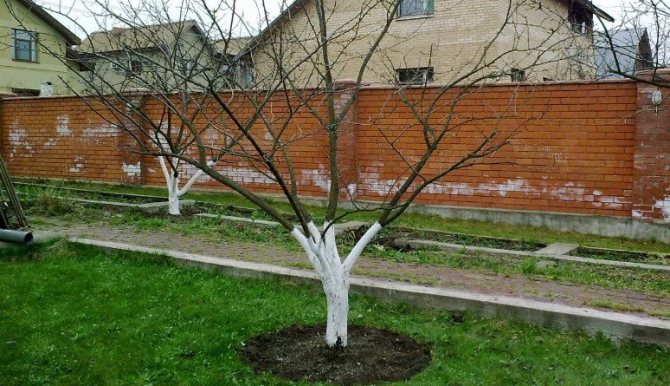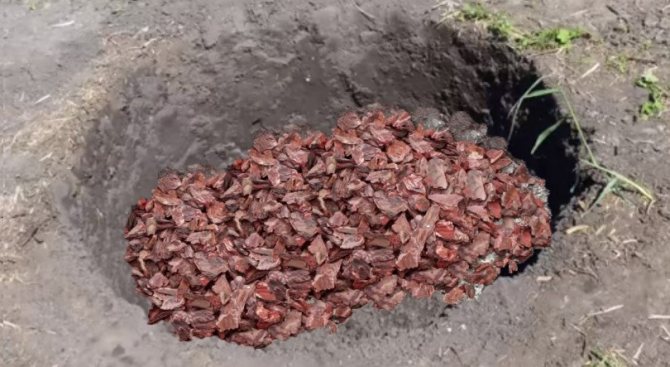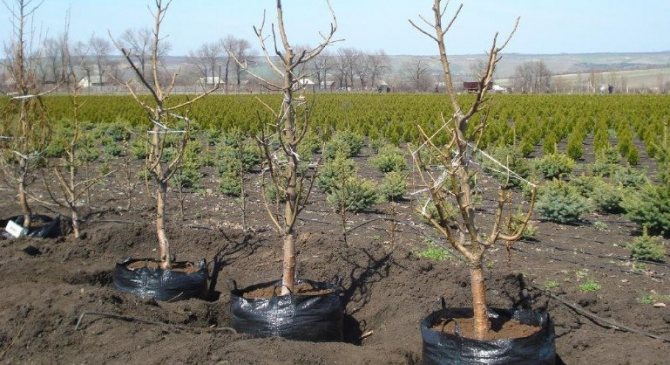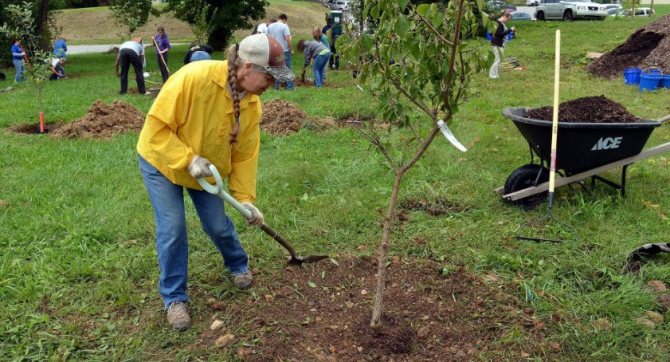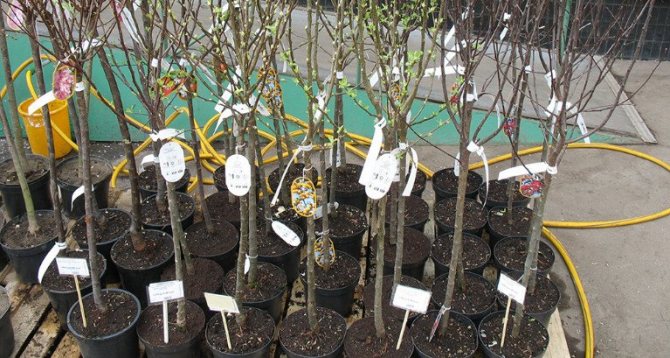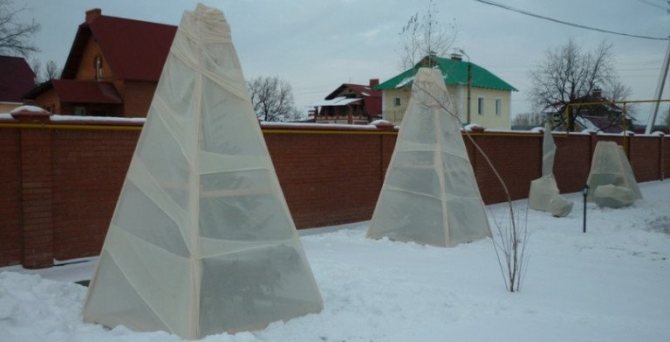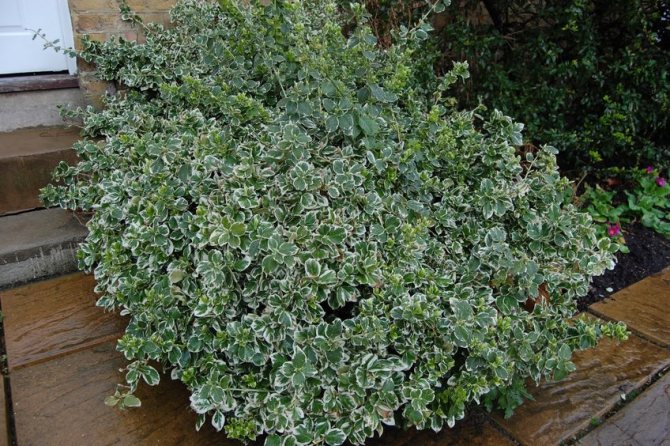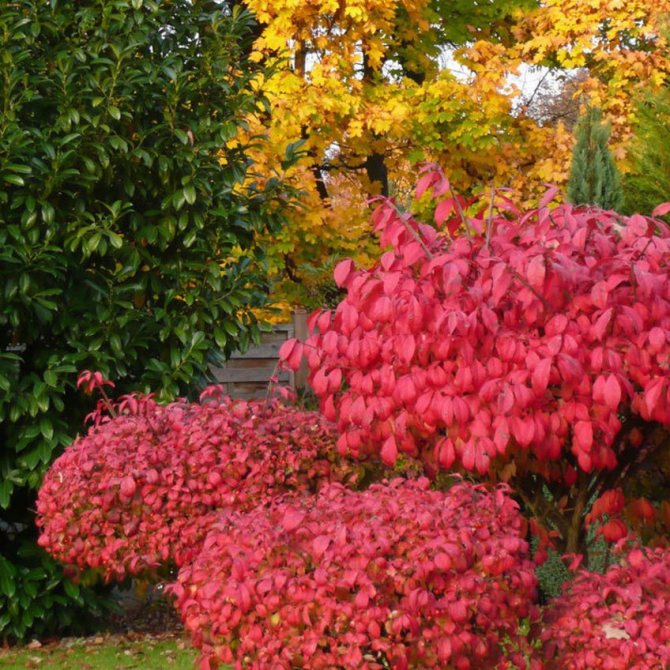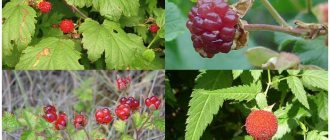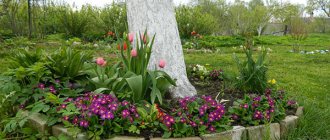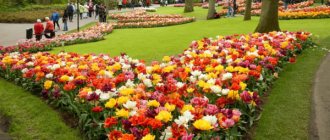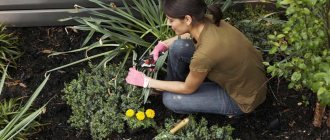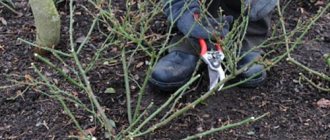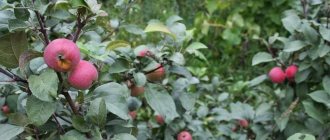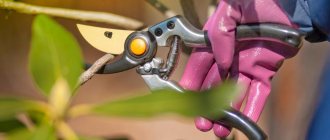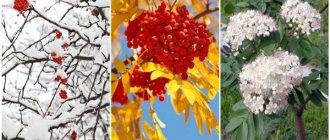Photo of a site with an artificial reservoir.
Soil in the garden
We are sure that you, as an experienced person in terms of the annual selection of crops grown on your site, know that in order to plan them, you need to know which soil in the garden is more suitable for a particular variety, variety. And if earlier this was done "by eye", now it is necessary to correctly determine the soil composition, which means that it is imperative to find out its acidity (pH).
It is quite simple to do this - take samples taken from the garden to a special laboratory. Necessarily, for a more accurate composition, you need to take several samples from different parts of it. If you don't want to wait a long time, pay, or are just wondering whether it is possible to do this test at home, we answer - albeit not so accurate, but it is possible. To do this, take the same "samples", mix them thoroughly to get, literally a homogeneous mass and pour a part into a jar or other container. Next, pour in some vinegar and see the result. There will be 2 of them, and each will indicate its own designation:
- Bubbles appear on a soil sample upon contact with vinegar, which will indicate a neutral pH;
- The vinegar will soak into the soil with no visible reaction, which will determine the acidic pH of the soil.
Let's say right away that this is not the most accurate analysis, but it allows you to quickly and clearly highlight this important issue.
Site requirements
Ground water level
So that all efforts to grow a garden are not in vain, it is necessary to study the conditions on the site. The most important point is the proximity of the groundwater table. They must flow at a depth of at least 2.5 - 3 meters.
If you plant fruit trees in an area where groundwater is located closer to the surface, then the trees will grow until a certain point, after which they will die. This is due to the fact that their roots will grow and, in the end, will reach the groundwater, after which they will rot and die off. The harbinger of the death of a fruit tree is the drying of the crown top.
Therefore, if you purchase a plot specifically for a garden, you should find out in advance at what depth the groundwater is located.
Advice! In the central lane and in the northern regions, it is best to grow fruit trees in areas with a slight slope, since they receive more heat from the sun.
Fertile layer thickness
The effectiveness of the garden also largely depends on the thickness of the fertile garden. For fruit trees, it must be large enough. In addition, it is desirable that the soil is moderately moist and permeable to air and water.
To investigate the soil, in different parts of the site it is necessary to dig trenches with a depth of about 2-2.5 meters, i.e. to the depth where the root system will develop. In this case, it is necessary to pay attention to dense soil layers, which must be breathable.
If the soil layers are too dense, then this deficiency can manifest itself only several years after planting - they will begin to grow poorly and may even completely die. Of course, you can grow an orchard, even if the site does not quite meet these requirements, however, you will have to spend a lot of time and effort. In such a situation, it would be more expedient to start growing vegetables.
Site relief
When choosing a place for a garden, you need to pay attention to its relief, namely, the presence of lowlands and depressions. If water stagnates in them for a long time after rains or melting snow, then you will have to fill them up in order to level the relief. This procedure will be expensive.
If the relief is not leveled, trees will grow poorly as a result of soil salinization and become susceptible to fungal diseases.
Fruit tree compatibility
Neighborhood table of fruit trees and shrubs
| Tree, bush | Good compatibility of trees and shrubs | Not suitable for the neighborhood |
| Apple tree | Raspberries | Viburnum, barberry and all stone bushes |
| Pear | Rowan | Walnut, cedar, viburnum, barberry and all stone bushes |
| Plum | Black currant, elderberry | Pear, apple, raspberry |
| Cherry | Sweet cherry, plum | Apple tree, raspberry, apricot, currant |
| Apricot | Feels more comfortable alone | Apple tree, plum, cherry, peach |
| Sweet cherry | Apple tree, rowan | Get along with all trees and shrubs |
| Peach | Feels more comfortable alone | Walnut, pear, apple, sweet cherry, cherry |
| Grapes | Pear | Nut |
What fruit trees can not be planted nearby
It is not recommended to place next to those fruit, which:
- They have common pests, are prone to the same diseases;
- They release chemicals into the soil;
- They grow at different rates. The crop that develops faster will take a large amount of nutrients from the soil.
- They love moisture equally;
- They have a spreading crown, which can lead to a lack of sunlight.
Important! Coniferous crops adorn the garden plot, but they are bad neighbors for fruit trees - their branches do not allow the fruit to receive enough sunlight.
Berry bushes compatibility
Black and golden currants will become wonderful neighbors. Red currants and gooseberries, grapes and raspberries get along well.
Sea buckthorn can be a good neighbor for fruit bushes. But its roots are growing rapidly, so they are limited to roofing material or slate.
Planting trees and shrubs
It all starts with planting trees and shrubs. Information about compatibility and incompatibility of cultures is needed here. First of all, you need to sketch out a detailed plan for the location of plant objects.
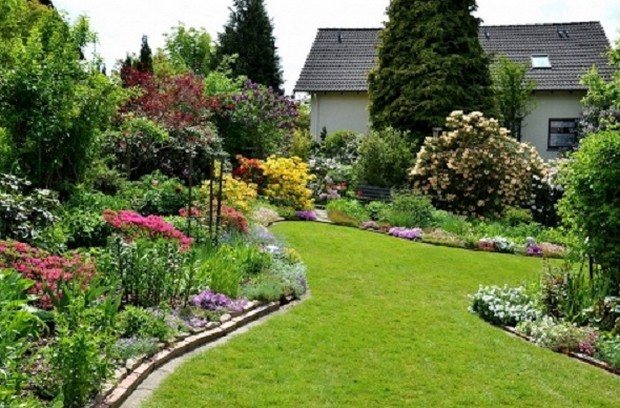
Garden of trees and shrubs
How to plan a fruit tree garden
You can turn to landscape designers for help, or you can create a garden design yourself. Currently, there are different programs on the computer, with the help of which you can create a real "masterpiece" and accurately plan every meter of free land. In addition, all the subtleties of the positioning and planting process will be taken into account. For example, the requirements of each individual culture.
The first thing you need to decide on is the types of plants for planting. It is important to take into account the peculiarities of the local climate, the structure and composition of the soil, the relief of the land. The most convenient shape for planning is a classic rectangle. The entire site is divided into separate sections.
Attention! This method is good for owners of elongated and narrow sections.
Another shape of the site is round. The main plantings are flower beds, lawns, patio. All lines should be smooth and without sharp corners. They can be hidden behind climbing crops.
A square plot is a great option for beginners. It is the easiest way to translate the project into reality.The diagonal layout idea helps to visually resize the lot. If necessary, you can visually increase the width or length.
When there is a complex relief in the garden, for example, ponds, stones, a free type will do. However, there are some peculiarities here too.
Distance between trees when planting fruit trees
When planting garden trees and shrubs, the distance between them must be taken into account. It should not be placed close, because this can lead to a lack of moisture, nutrients, microelements.
This is taken into account when deciding to plant seedlings. Knowing the size of an adult shrub or tree helps in determining the size of the distance. For example, apricot, pear, apple tree grow quite tall. The distance between the seedlings should be at least 5 m.For dwarf varieties, 3 m will be enough.All 2 m is left between the columnar apple trees.
Planting apple trees: distance between trees
The planting scheme for an apple crop differs depending on the area of cultivation. For example, in the south of the Russian Federation, the distance between seedlings is left more than required. The same is true between the rows. The landing pattern is called in this case checkerboard. This is due to the peculiarities of the soil in these areas.
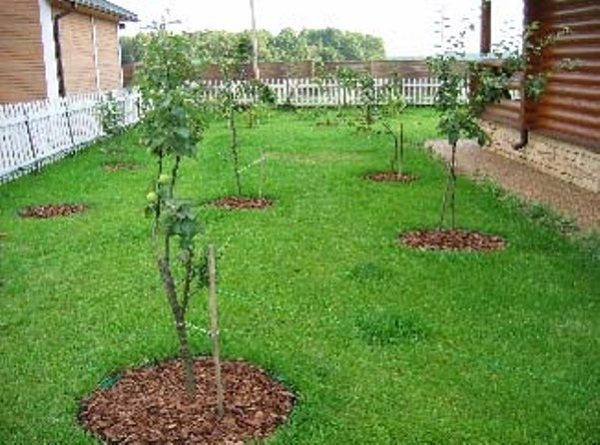

Chess planting of apple trees
Between dwarf species, they maintain a distance of up to 3 m and are planted in one row. The row spacing is from 4 to 5 m. When planting semi-dwarf tree varieties, 4.5 m are left between the rows and seedlings. Between tall ones - 5 m.
On a note: Apple trees are sometimes used as a "hedge" by planting trees along the fence in a row. If it is necessary to form arched "structures", up to 2 m of free space is left between the dwarf apple trees.
Medium apple trees require a 5 m distance between seedlings, and especially high ones - 6 m. To make a rational arrangement of trees, you need to choose the chess option. The distance decreases in this case:
- for dwarf varieties between seedlings and rows, respectively, 1.5 and 3 m;
- for semi-dwarf - 3.5 and 3 m;
- for tall people - 4.5 and 5 m.
It should be borne in mind that this arrangement requires more maintenance.
Create a planting plan
We agree that planning a garden is a painstaking work that will take not a single day, but without this you will not make rich harvests, and this place will not be a rest for you.
The first thing to start with - Drawing a plan of "possessions" on paper
The drawing should contain the most complete information: shape and size, information about the acidity of the soil, its orientation. Next, divide the site into zones - garden, vegetable garden, residential and utility zones. It will be great if you observe and enter the amount of shadow from buildings, trees. Now, in order to plan the garden more clearly, we are making its "model". To do this, cut strips out of paper and write the name of the plants you will plant, as well as important devices such as irrigation centers, compost containers. Place them, play and find the right combination. For those who believe that these actions "can be omitted", let's say that it is better to prepare on paper than to find the right places in the garden itself in the spring. When all the forms and places are determined, you can think about the varieties and varieties of crops that are needed in the garden.
General approaches to planting a garden
Lay the garden in the fall, that is, dig planting holes according to your scheme, prepare the fertilizer mixture near each that is necessary for the condition of the soil.
Planting pit preparation
In the fall, you can prepare a planting hole of only approximate dimensions, since the final version will be determined by the size of the root system, which depends on the age of the purchased seedling.The preliminary size of the planting pit is approximately 60x60 for 2-year-old seedlings, for 3-year-old it can be increased to 70x80 cm and finalized when the seedling is planted in the hole.
Preparing the potting mix
Near each pit, mix the topsoil with humus, peat. In the spring, before planting a seedling, add to this mixture a glass of wood ash and slaked lime and 200 g of nitrophoska each. Mix well.
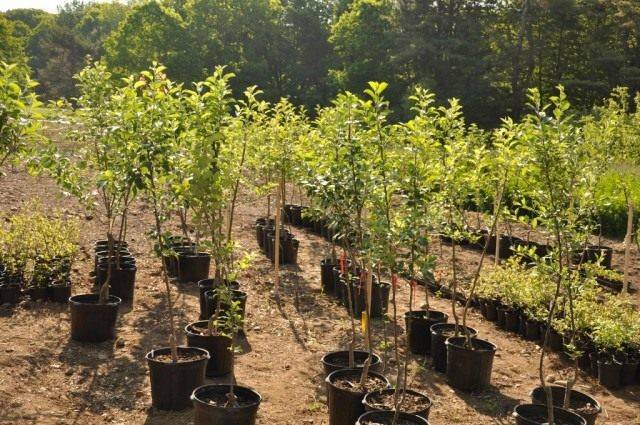

Seedlings of fruit trees and berry bushes are best purchased from trusted manufacturers. <>
Purchase and preparation of seedlings
Planting seedlings is best done in the spring. During the growing season, the seedlings will get stronger, the root system will be strengthened. During the warm spring-summer-autumn period, a young tree adapts to a new habitat.
Take your time to buy seedlings from individual unfamiliar sellers, especially along the roads leading to the dacha. It is better to purchase seedlings from farms that grow them or in nurseries. There is more confidence that you will get the desired zoned variety of exactly the garden or berry crop you need.
Examine the selected seedling carefully. If you find dried roots, a crooked stem, cracks in the bark, or drops of gum, skip the purchase. Remember! No seller's assurances will refund lost time.
Planting rules for seedlings
Soak the seedlings in the root or other growth stimulant 1-2 days before planting. Prepare a container of clay mash with the addition of root, planriz or phytosporin. You can use other biofungicides suitable for tank mixes.
About 2-3 weeks before planting the seedlings, pour part of the soil mixture with a cone into the hole. During this week, the cone will settle, and the planted seedling will be correctly placed in the hole. Dip the prepared seedling into a chatterbox, insert it into the hole, straighten the root in a cone so that there are no creases upward, and fill 2/3 of the hole with soil mixture. Pour a bucket of water. After soaking back up the rest of the potting mix or soil. Drive in the stake and secure the seedling with a figure eight to the support. A loose seedling, swaying under the gusts of wind, will break off small roots that provide a connection between the plant and the soil.
Rational distribution laws
Of course, planning the location of buildings, a garden and a vegetable garden on 10 acres is much easier, this is the same critical square, on which such landscape delights as an open pond or a separate playground will already look appropriate. But the owners of smaller plots should also not be upset, with a competent approach, a masterpiece can be made from any territory.
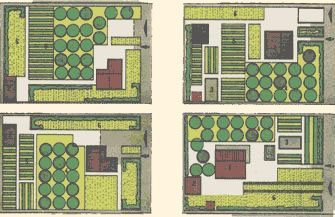

Parallel layout.
In any project, the house is the main object, they pay attention to it first of all, so you should start with it. The approach here can be twofold, depending on the overall focus.
If the site is being developed for the purpose of growing a good harvest and in the future it should be overgrown with fruit trees and a rich vegetable garden, then it is better to place the buildings on the outskirts. Moreover, from the north or northwest side, so as not to block the sun from the plants.
On the territory intended exclusively for recreation, with lawns and flower beds, it is more reasonable to locate housing in the center or closer to the front part. Outbuildings, in both cases, are recommended to be hidden in the depths of the territory, if this is not possible, then they should be decorated at the summer cottage with a hedge, shrub or vineyard.
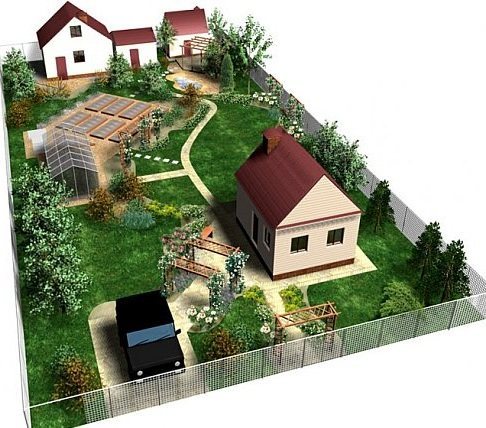

Mixed location.
Euonymus
Unpretentious, easily tolerates air pollution, grows well in shade and partial shade. There are quite a few types of euonymus, so among them you can find both low shrubs and large trees with a fluffy crown.
The euonymus blooms in May - June, but these flowers do not attract attention, but the most spectacular in this plant is, of course, foliage! In the spring it has the usual green color, but closer to autumn it flashes with all kinds of colors: white, yellow, purple, crimson, red, violet, orange.
The fruits of euonymus are also interesting - bright boxes on long legs of bright, contrasting colors. They are not only a decoration for the autumn and winter garden, but also attract birds there. Attention! The fruits of the euonymus are poisonous!
Spindle trees are used as ground cover shrubs, planted in flower arrangements, in paving windows, in rockeries and alpine hills. A good contrasting combination of euonymus with conifers: thujas, junipers, boxwoods.
Fortune's euonymus - low, variegated shrub up to 0.5 meters in height. Valuable for the bright colors of emerald foliage with a white or golden yellow border
- Vegetus
- Minimus
- Emerald gaiety
- Emerald gold
- SunSpot
- Sheridangold
- SilverQueen
Japanese euonymus (Euonymus japonicus)
European spindle tree Albus
warty euonymus (Euonymus verrucosus) - reaches 1.5 meters, frost-resistant, very decorative
dwarf euonymus - a creeping species without a trunk with arched branches
Koopman's euonymus - a creeping species without a trunk with arched branches
Correct beds
If there are no correct beds in the garden, then rest will not work - everything will be painstaking work. Therefore, we will pay attention to the beds in order to correctly plan the garden.
- Lowering or raising
There are several positions of the beds: recessed, raised, flush with the ground. The level is determined by the availability of the ability to water every day, natural conditions. For example, if you cannot water your beds every day, then it is better to deepen them, and vice versa.
- Dimensions (edit)
Forms can be completely different, the most important thing is easy access. If the length can be any, then the width for easy access should not be more than 1 meter. The optimal width is from 60 cm. The size design is at your request (brick, slate, etc. or not).
- Crop rotation of your crops
This is one of the most important issues that must be resolved not only in order to plan the garden, but also to get a rich harvest. The sequence of "returning to the previous place" is about 4 years. Therefore, we advise you to divide the entire area into 4 sections, and observe all the necessary priorities, according to the crop rotation tables.
- Combined planting of crops
Here, in order to competently plan the site, it is worth knowing which cultures will not be able to coexist nearby, and which ones will even help grow, forming a “community”. For example, corn, beans and pumpkin are called “Three Sisters” among agronomists because their growth rates are perfectly matched to each other. But, it is worth knowing that not all plants are so “friendly”. A knowledgeable person will never plant dill and carrots nearby. The same goes for beans and peppers. In order to understand exactly which cultures help, and which ones “bury” each other, see the TABLE:
Crop compatibility chart
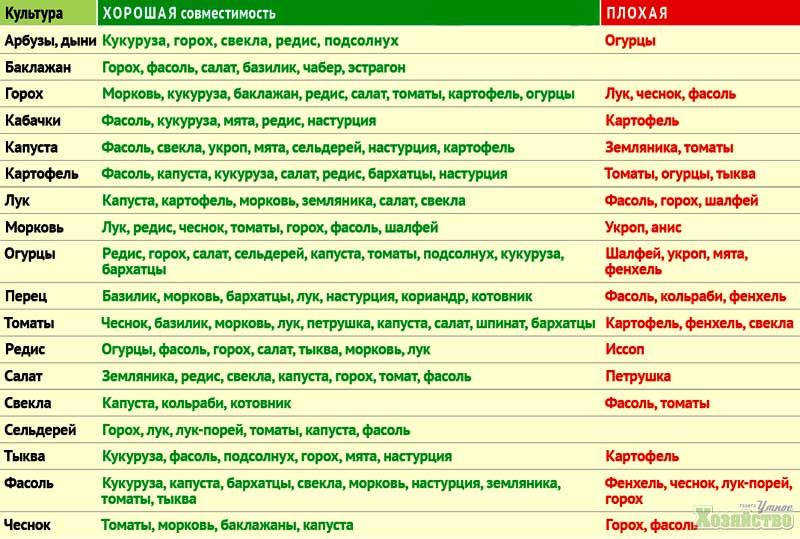

Crop compatibility chart Interesting tip: Garlic can not only help a person to strengthen the immune system, but also allow you to take care of the "immune system" of plants. This means that they will hurt much less. To do this, make a useful infusion according to the recipe: cut 5 garlic teeth and pour boiling water over them (1 liter), and then close the lid and let it brew for about 20 minutes. Immediately after that, in order to prevent any diseases, you can water indoor and garden plants with this infusion.
Features of garden planning - how to correctly place the beds and fruit trees on your site
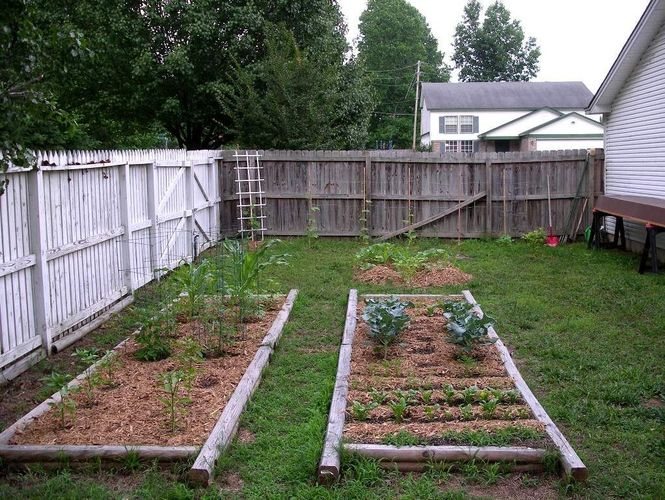

The harvest has long been harvested, and it is snowing outside the window. It would seem that it's time to take a break from summer cottages, but the thoughts of many gardeners are already devoted to the future summer cottage season: what and where to plant, what fertilizers and seeds to buy, how much and what kind of film is needed for greenhouses and hotbeds ... - then place potatoes, cabbage, carrots, beets, onions and garlic, green crops on their weave, because everything else: trees, shrubs, raspberries and strawberries have long had their legal planting places.
But in practice, everything turns out to be more complicated - you have to compare a lot of different factors in order to make, sometimes, only one single correct decision. Moreover, for this it is not enough to know which cultures are light-loving and which are shade-tolerant - it is also necessary to take into account the fertility of this or that site, which crops grew here in the past, and preferably, and not only last year, and which crops will grow nearby peacefully and without conflicts.
Therefore, truly enthusiastic gardeners and gardeners have to plan and record in their garden no less painstakingly than accountants do their reporting. For example, my grandfather had a huge ledger with detailed garden plans for several decades, starting in the 50s. In fact, for so many years, information is not needed - in most cases, it is enough to have data for 3-4 years, but here the truly accounting nature of the grandfather affected. Everything is easier for me, since I have a computer at hand, and it is enough for me to simply record the year on a plan drawn once in the corresponding program and mark where and what cultures I grew up with. But most probably still have to draw such a plan by hand - in this case, it is wiser to draw a plan once indicating trees, shrubs, greenhouses, greenhouses and permanent ridges, then take a dozen photocopies, and on each one already mark the crops planted in this or that year - it will be so much faster.
How to reconcile all the pros and cons
Even with all the information you need, finding the right solution can be tricky. You start to place, and it seems that almost everything was planned out, but at the last stage it turns out that, for example, there is a bed for cabbage, on which this cabbage grew the year before last and at the same time was sick with keel. So, you can't plant her here, and everything starts over. Again, you have to redo the plan, look for a new solution and draw it again.
If you are familiar with a similar situation and every year you bring yourself to a headache by planning and moving crops around the garden again, then try an interesting solution that I recently read about (I don't need it, since I do everything on a computer, but most gardeners will probably come in handy). True, to use this approach, you must have rectangular beds that are close in size, and each vegetable must be planted on its own bed (that is, not in company with others).
In this case, you can plan like this: take last year's site plan (or better plans for 3-4 years) and a blank sheet of paper. Draw this sheet into identical rectangles and write on them: potatoes, cabbage, carrots, onions, garlic, etc., listing everything that you plan to plant. Moreover, if you always occupy two ridges with garlic, then, accordingly, there should be two rectangles with the name "garlic", and so on. Cut the paper into separate rectangles and start on your plan to collect a puzzle called "entertaining garden", placing ridges-rectangles in the right way in the chosen places of your plan. It's not scary to make a mistake here, because it's easy to fix everything by moving the "wrong" rectangle to a new location. Try it, and it will be much easier to replay all the situations in your head and redraw your plan repeatedly and painstakingly.
What factors need to be considered when planning a vegetable garden?
The first - all vegetables love a sunny place. Only green crops, which include onions on a feather, and perennial onions like chives and slime, partially put up with penumbra. This means that in a small shade of the house, fence, trees and shrubs, you can sow and plant onions and some herbs. Although you will not get a large harvest in this case, you still cannot grow anything else in these places.
Second - compatibility of vegetables: who is with whom it is good or, conversely, it is bad. Cabbage doesn't live with tomatoes and beans.Cucumber - with potatoes. Tomatoes - with fennel. Potatoes - with tomatoes and pumpkin. Peas and beans are very unpleasant onions and garlic, radish - hyssop. Only now carrots get along with everyone, although from the point of view of protection from carrot flies, it is preferable to sow it in the company with onions. It was about bad neighbors.
And the good ones? Here are other examples. All vegetables of the celery family (carrots, parsnips, parsley, celery) go well with the onion family: onions, garlic, leeks, and shallots. White and black radishes work well for other vegetables. Radish grows very well between rows of bush beans - it becomes very large, tasty and not wormy. Beans, corn, cabbage, horseradish and onions do not interfere with potatoes. But each separately, because there are several irreconcilable couples in this group.
Compatible with cabbage, onions, celery, potatoes, dill and lettuce. Tomatoes can be planted alongside greens and cabbages, asparagus and beans. Peas can coexist with carrots, cucumbers, potatoes, radishes, corn. Etc.
Third rule no less important - it should be borne in mind that phytoncides secreted by some plants scare away pests of other crops or prevent some diseases from developing. For example, onion phytoncides scare off carrot flies, and carrot phytoncides scare off onions. Dill protects cucumbers from disease, while onions and garlic protect tomatoes. Planting strong-smelling plants such as celery, thyme, or sage near the cabbage will drown out the smell of the cabbage and make it less attractive to pests. And basil is a good idea to plant near beans for protection from legume weevil, garlic - near roses to protect against aphids, parsley - near asparagus.
When planning we must also take into account the predecessors, that is, whether a suitable vegetable grew last season in the place where you will plant another in the spring. And here again there are numerous schemes! And the most important thing to learn is that you cannot plant the same culture in the same place. And, in addition, cabbage cannot be placed after any cabbage and beets. Beets - after beets, cabbage and tomatoes. Tomatoes - after all the nightshades and peas.
Fifth, which has to be taken into account - dlong-term crop rotation, perspective for 3-4 years. It's even more complicated here. Agronomy teaches you to rotate vegetables according to their nutrient needs, in particular organic. Conventionally, in the first year (i.e. on fresh organic matter), cucumber, zucchini, pumpkin, cabbage of medium and late ripening periods, leeks, etc. are grown, that is, those crops for which a lot of organic matter needs to be applied. In the second year, they are replaced by onions, peppers, tomatoes, potatoes. The third is the turn of root crops (carrots, beets, radishes, etc.), which have to add a hefty portion of mineral fertilizers.
Garden planning features
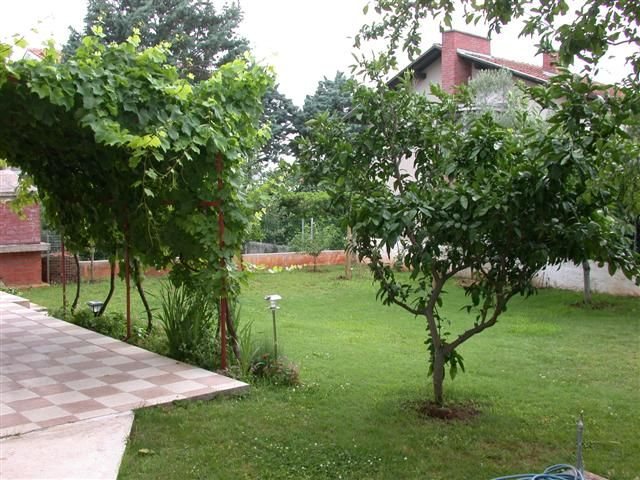

With the garden, it is still more difficult, because we plant vegetables every year, and if one year your layout turned out to be unsuccessful, then perhaps the next year everything will turn out to be much better.
We place trees and shrubs in permanent places for a long time, and once planted apple trees will supply you with fruits for the rest of your life. Therefore, when drawing up a garden plan, it is imperative to allocate separate permanent places for each tree species, for vegetables, for flowers, and everything must be correctly calculated in advance where and what will grow in 10-20 years. And there are many rules here too.
Rule one consists in the presence of a permanent place for each group of crops (fruit trees, berry bushes, vegetable and ornamental crops). A common mistake is the combined arrangement of crops, when vegetables, strawberries, berry bushes are placed among young apple and pear trees. At first, everything turns out well: the trees do not take up much space, there is enough light and nutrition for other plants.But over time, the trees grow, and then the catch crops fall into the shade, their yield becomes low. Therefore, the first rule of site planning is to allocate a separate permanent place for each crop. Of course, you can temporarily grow berry bushes, strawberries and vegetables among vigorous tree species, but then, when there is a strong darkening, they will have to be removed and moved somewhere else, which you need to think about in advance.
Second rule is to provide for the possibility of renewing strawberries, berry bushes, cherry and plum trees. Say, strawberries bear fruit well in one place for 2-3 years. In the fourth or, in extreme cases, the fifth year of fruiting, it must be completely eliminated. Therefore, one garden bed is vacated annually to grow vegetables here the next year, and the vegetable bed is planted with strawberries. Therefore, it is more convenient to refer strawberries not to the garden, but to the garden and to change strawberry ridges with vegetable ridges. Currant, gooseberry and raspberry bushes can theoretically bear fruit for a very long time in one place, and everything here depends on proper care. It is more profitable (from the point of view of saving your own time) to look after these crops well and regularly prune and spray, then in one place, subject to rejuvenating pruning, they can bear fruit for 10, 15 years or more. And everything will be fine. And if you take care of it badly, then they will not last long, the bushes will weaken from diseases, pests, malnutrition and thickening, and you will have to look for another place for them and start growing and shaping again.
The third rule of planning - respect for the rights of a neighbor. Your trees should not shade the adjacent area too much. The distance from the tree trunk to the border should be at least half of the generally accepted row spacing: for vigorous trees 3.5-4 m, for medium-sized trees - 2.0-2.5 m.In the strip between the trees and the border, you can plant currants, gooseberries, raspberries ... And in no case should you plant tall trees and shrubs 20 cm from the border, which, alas, is not uncommon.
Fourth rule of planning - a decrease in the height of plants as they approach the house. In order for the housing to be dry and light, the lowest plants should be placed near the house - flowers, lawn grasses, part of strawberries, vegetables, shrubs, and tall trees should be taken further into the interior of the site.
Fifth rule - taking into account the characteristics of certain plants. From berry bushes in drier, but well-lit places, it is better to plant red currants, gooseberries, and black currants on lower, more humid (but not swampy) places. Raspberries and sea buckthorn are planted separately in specially designated areas of the site, since the former gives many root suckers, and the latter develops long roots that interfere with the growth and development of other plants; strawberries are planted in places where snow lingers well in winter. Growing strawberries between fruit trees is undesirable.
Chokeberry and sea buckthorn look good when planted in groups closer to home. Lemongrass and actinidia are planted near the wall of the house so that there is protection from the wind and the possibility of creating reliable vertical supports for them. Barberry and lilacs are planted away from all other crops (somewhere apart), because their root secretions do not give life to other plants.
Svetlana Shlyakhtina, Yekaterinburg
76770
Tags: garden beds garden
Share on social networks:
Add new comment
Garden layout
When a place was selected for planting seedlings, it is important to decide on a scheme for planting them. It is recommended to plant trees according to four schemes, which have their own peculiarities of the arrangement of plants, which simplify the process of caring for the seedlings and get a bountiful harvest.
A vegetable garden for the lazy: practical advice for summer residents.
Quadratic scheme
The most common planting scheme is quadratic: it allows you to create comfortable conditions for caring for the garden. According to this scheme, trees are planted in even rows. The distance between trees depends on their species and varieties.
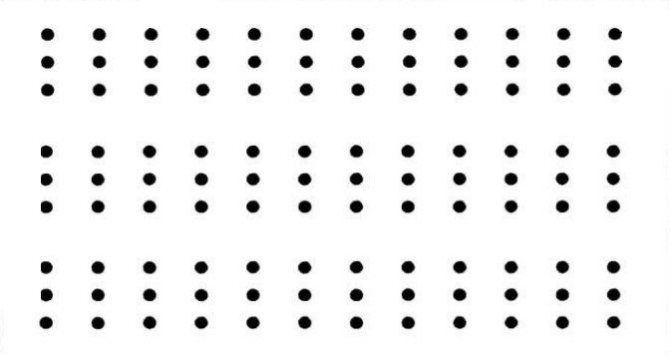

Important! It is also necessary to take into account the planting scheme in order to rationally use the space, therefore it is better to arrange trees in a square area according to a quadratic scheme.
If dwarf varieties were chosen, the optimal distance between rows is 4 m, 2.5 m must be left between trees.Classic species that have been grafted on a wild stock should be planted at a distance of at least 3.5 m from each other, between in rows - 5 m. Tall and vigorous species should be at a distance of 4 m, between rows 6 m are preserved.
Learn how to properly equip a garden plot, create a landscape design, arrange a front garden, level a plot, make lighting and decorate a winter garden.
The quadratic planting scheme is suitable for trees that are not demanding on lighting, they normally tolerate partial shade created by adjacent rows. Usually, apple trees of different varieties are planted in this way, some varieties of pears.
Chess
The chess scheme is very similar to the quadratic one, only one more tree is planted in each square between four trees. The scheme is more dense, therefore it is suitable for planting medium-sized plants with a small crown. If the garden is located on a slope, then a checkerboard pattern will be the best option for planting trees to reduce soil washout by precipitation.
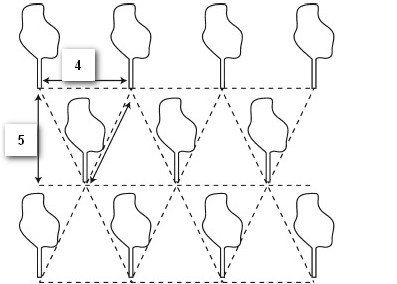

The checkerboard method of planting allows the trees to receive the maximum amount of light, therefore, it is suitable for light-loving plants - plum, apricot, peach, as well as for apple and pear trees. The distance between the trees should be 4 m, it is better to leave 5 m between the rows.
Triangular scheme
Planting trees in a triangular pattern is characterized by a denser arrangement of plants with a large crown. According to the triangular scheme, all trees will be even-standing, which will allow to plant 15% more plants than according to the quadratic scheme.
Shrub cinquefoil (Kuril tea, five-leafed leaf)
Shrub cinquefoil is a wonderful, unpretentious and winter-hardy plant. Blossoming: a large number of large flowers of various colors (yellow, white, pink, orange). There are terry forms. Flowering lasts from May to August, some varieties bloom until October.
The height of the bush is from 0.5-0.7m to 1.5m. The crown is dense, strongly branched, has the shape of a ball. It lends itself well to cutting and shaping. Cinquefoil is light-requiring and drought-resistant. However, in the bright sun, flowers can fade.
Cinquefoil is perfect for creating hedge, flower garden and design of an alpine slide. It goes well with conifers. It is often planted in the foreground of plants with a bare bottom.
Popular varieties:
- Goldstar - bright yellow flowers up to 5cm, blooms from June to October
- Abbotswood - flowers are pure white, simple with a diameter of 2.5 cm.Flowering: June - October
- Snowbird - white, terry
- Annette - undersized shrub 0.5m, orange flowers
- Pink Beauty - dark pink flowers up to 3cm in diameter. Bloom from June to frost
- Pink Queen - flowers are pink. Bloom from May to October
- Princess syn. Blink - flowers pale pink 2.5 cm
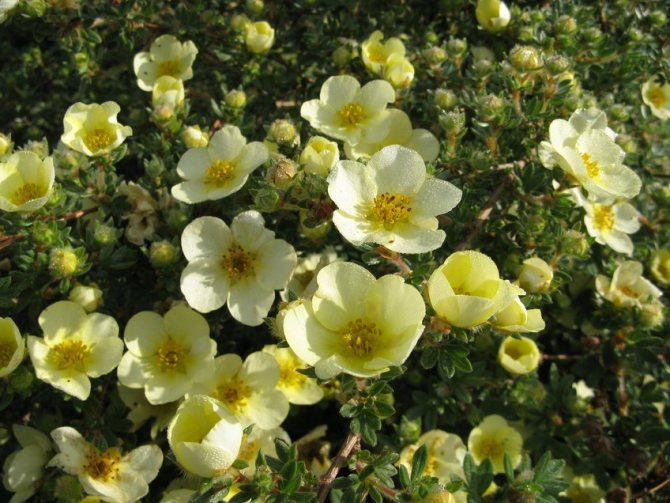

Common types of planning
Advice: in the overwhelming majority of cases, when designing a standard garden and vegetable garden with their own hands, experts adhere to the proportions according to which residential buildings account for 10% of the territory, 15% are taken by the recreation area and outbuildings, 75% are given to plants.
Despite the apparent variety, the layout of the garden site can be performed in four main ways.
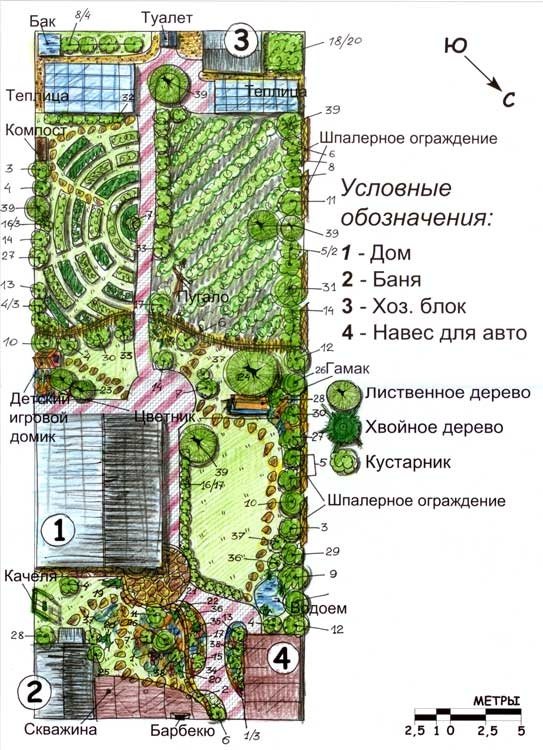

Country house sketch.
- The most common is the straight or parallel-perpendicular option. They choose him not because he has some special beauty, but rather because it is easier this way. Plus, this arrangement is subconsciously associated with order.
Important: parallel-perpendicular forms, in terms of landscape design, create the effect of reducing space. Therefore, in this way, the planning of a garden plot of 10 acres or more can be performed.
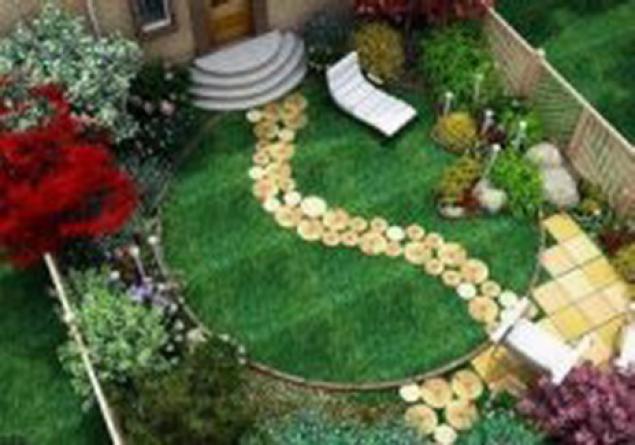

A circular option for 6 acres.
- The exact opposite would be the circular arrangement. Let's say right away that this is a rather specific method of arranging a summer cottage, and it requires certain knowledge in landscape design. A fruit garden and flower gardens can be entered in this way, but it will be more difficult with a vegetable garden.
- The diagonal arrangement can be called universal to some extent. Thus, it can be performed as a layout for a garden plot of 15 acres or more. So is the arrangement on a standard six hundred square meters. The diagonal orientation creates a visual volume and at the same time makes it possible to easily arrange the location of various zones on the site with your own hands.
- The fourth option can be safely called creative. There are no definite laws here, as a rule, it is a symbiosis of several types described above. Most often it is used in areas with an incorrect configuration and broken perimeter lines.
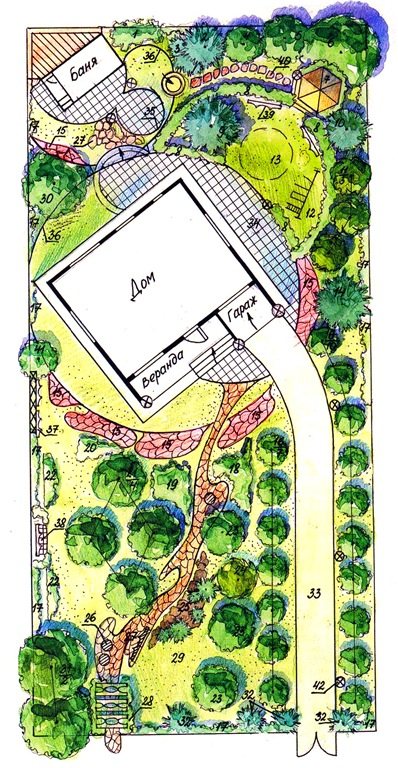

Scheme with a house in the center.
Tip: before starting the implementation of your project, you must definitely draw it on paper. If you have purchased a ready-made plot on which there are already some buildings and plantings that you do not plan to remove, they should be noted first and then based on the resulting picture.

